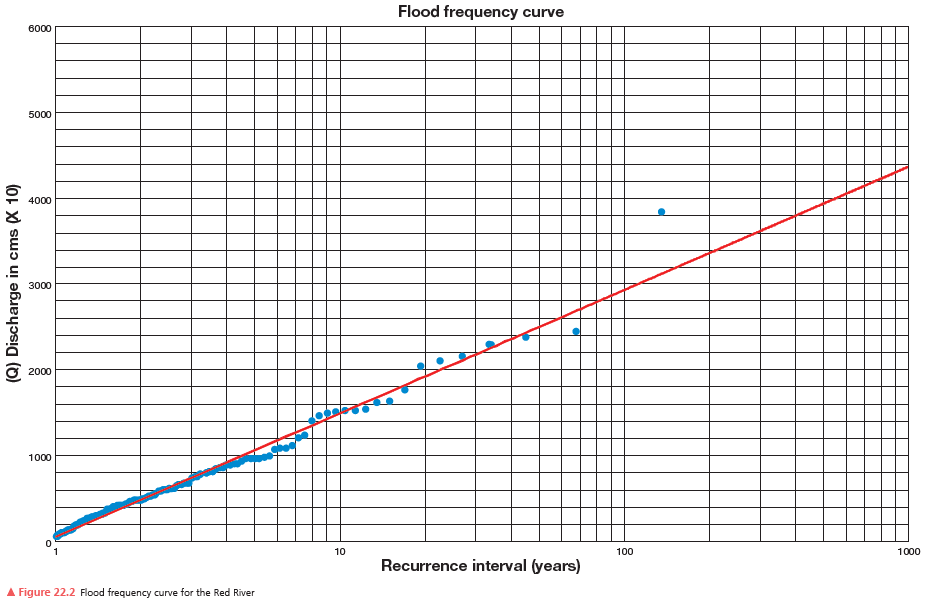Using the flood frequency curve in Figure 22.2 (and colored pencils to mark on graph), estimate the recurrence interval of a flood of the following magnitudes:

200 cms: _____________
1500 cms: _____________
3000 cms: _____________
200 cms: less than 1 year
1500 cms: 10 years
3000 cms: 110 years
You might also like to view...
Composting is a waste disposal method that
A. Is more environmentally costly than landfilling B. Vastly reduces total waste volumes C. Is technologically complex D. Is useful only for single households E. Is not realistic for college students
Visible satellite images [INSERT FIGURE 6-35A. NO CAPTION]
A) are useful for identifying cloud-covered areas B) are useful for distinguishing between low-, medium- and high-level clouds C) are useful for observing clouds during both day and night
It is unusual for the wind to move grains larger than ________ in diameter
A) 0.05 mm B) 0.5 mm C) 5 mm D) 0.5 cm
Modern cities that are incorporating sustainability as a guiding principle have realized that by mimicking important features of natural ecosystems, their city is at the forefront of today's urban planning
At the center of this sustainability design is the efficient capture and use of energy and matter. Describe and explain three specific ways in which a city can incorporate aspects of this ecosystem principle that focuses on matter and energy use.